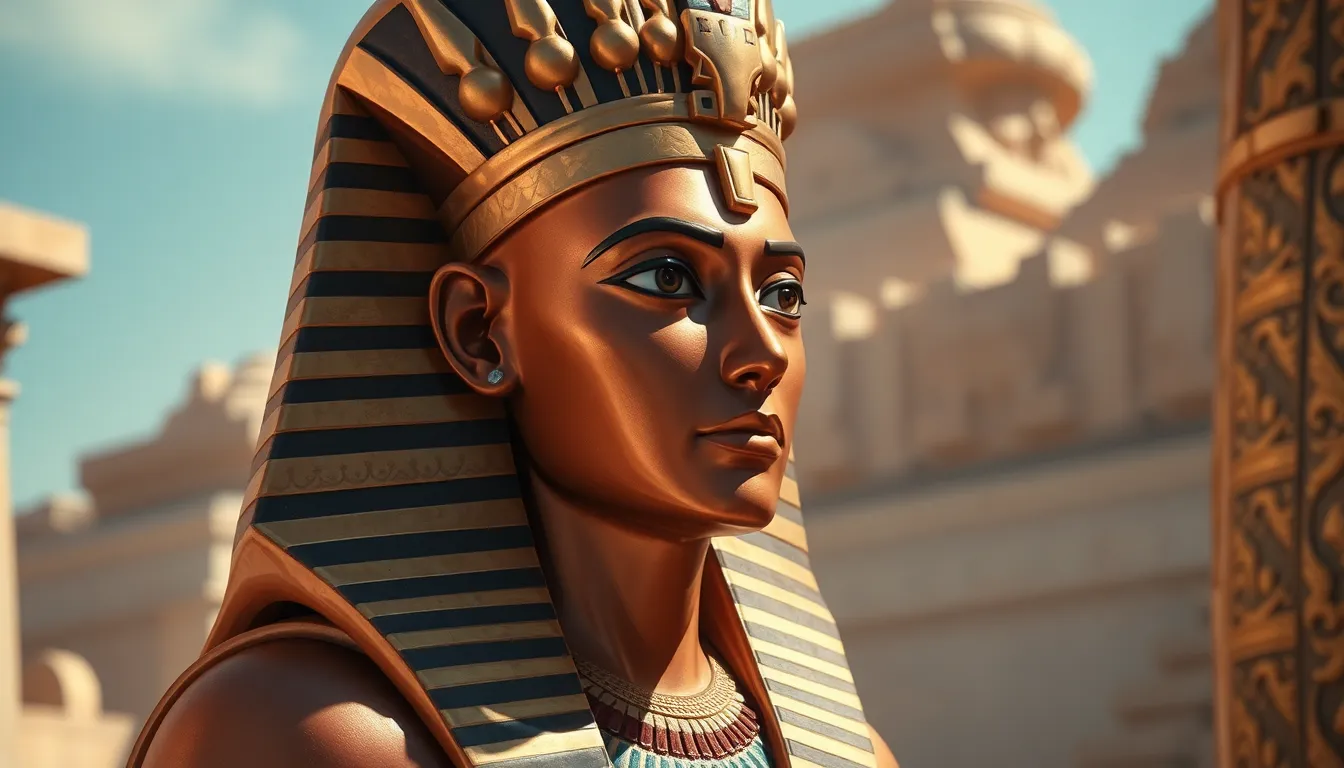The Pharaoh’s Divine Role in Community Leadership
I. Introduction
The Pharaoh of ancient Egypt was much more than a mere ruler; he was a pivotal figure whose significance permeated every aspect of Egyptian society. The Pharaoh was revered as a living god, embodying the connection between the divine and the earthly realm. This dual role as both a political leader and a divine figure allowed the Pharaoh to wield immense power and influence, shaping the culture and societal structure of ancient Egypt.
This article aims to explore the multifaceted role of the Pharaoh in ancient Egyptian leadership, examining how their divine status influenced governance, religion, and community life.
II. Historical Context of Pharaohs in Ancient Egypt
The role of the Pharaoh evolved significantly from the early dynasties through to the New Kingdom, reflecting changes in society, politics, and religion.
Key points in the evolution include:
- Early Dynasties: The unification of Upper and Lower Egypt under Narmer, establishing the Pharaoh as the supreme ruler.
- Middle Kingdom: A period marked by increased centralization and the Pharaoh’s image as a shepherd of the people.
- New Kingdom: The height of Pharaoh power, with figures like Ramses II and Hatshepsut expanding Egypt’s influence and wealth.
The socio-political structure of ancient Egypt was complex, characterized by a strong central authority vested in the Pharaoh, supported by a bureaucracy that included viziers, priests, and local governors, all of whom played vital roles in governance and administration.
III. The Divine Kingship Concept
Divine kingship is a cornerstone of ancient Egyptian ideology, suggesting that the Pharaoh was not just a political leader but also a god on earth. This concept has its origins in the early myths of creation, where the Pharaoh was seen as a direct descendant of the gods.
The Pharaoh acted as a mediator between the gods and the people, ensuring that the will of the deities was fulfilled on earth. Religious rituals were integral in reinforcing the Pharaoh’s divine authority, including:
- Coronations and rituals of ascension
- Daily temple offerings and ceremonies
- Festivals celebrating the gods, ensuring harmony and favor with the divine
IV. The Pharaoh’s Responsibilities in Community Leadership
The Pharaoh’s responsibilities extended beyond divine duties; they were crucial in maintaining order and prosperity within the kingdom. This included:
A. Maintaining Ma’at
Ma’at represents the ancient Egyptian concept of truth, balance, and cosmic order. The Pharaoh was responsible for upholding Ma’at, which was believed to ensure stability and harmony in society.
B. Economic Stewardship
The Pharaoh oversaw resource management, which included:
- Tax collection and distribution
- Management of agricultural production
- Trade initiatives with neighboring regions
C. Infrastructure Development
Infrastructure projects were a hallmark of a Pharaoh’s reign, including:
- Construction of temples and monuments
- Development of irrigation systems to support agriculture
- Building roads and trade routes to enhance commerce
V. The Pharaoh’s Role in Religion and Spirituality
As the primary religious authority, the Pharaoh played a vital role in sustaining the spiritual life of ancient Egypt.
A. Patronage of Temples
The Pharaoh funded and constructed grand temples dedicated to the gods, ensuring that religious practices were upheld and that the gods were honored.
B. Ritual Practices
Rituals and festivals were essential in honoring the gods and included:
- The Opet Festival, celebrating the sacred marriage of the Pharaoh and the goddess Amun
- Processions and offerings to appease the deities
- Funeral rites and ceremonies to honor deceased Pharaohs
C. Funerary Practices
The Pharaoh’s role in funerary practices was significant, as they were believed to ensure a safe passage to the afterlife, reflecting ancient beliefs about immortality and the afterlife.
VI. Symbolism and Iconography of the Pharaoh
The Pharaoh’s authority was reinforced through various symbols and artistic representations, which played a crucial role in communicating power and divine status.
A. Use of Symbols
Common symbols included:
- Crook and Flail: Representing kingship and authority
- Ankh: Symbolizing life and immortality
- Was Scepter: Representing power and dominion
B. Artistic Representations
Art in temples and tombs depicted the Pharaoh as a larger-than-life figure, often shown in a way that emphasized their divine nature and authority.
C. Imagery and Community Identity
The Pharaoh’s imagery was vital for community identity, fostering a sense of unity and shared belief in the divine nature of leadership.
VII. The Legacy of Pharaohs in Modern Understanding of Leadership
The impact of the Pharaohs extends beyond ancient Egypt, influencing contemporary views of leadership and governance.
A. Contemporary Views of Leadership
Modern leaders can draw lessons from the Pharaohs in areas such as:
- Community engagement and responsibility
- The importance of ethical governance
- Balancing power with the welfare of the people
B. Lessons from Ancient Governance
The Pharaohs’ approach to leadership, focusing on stability, order, and community welfare, remains relevant today.
C. Relevance of Divine Leadership
The concept of divine leadership, where leaders are seen as stewards of both spiritual and temporal power, can inform modern leadership ideals.
VIII. Conclusion
The Pharaoh’s multifaceted role in ancient Egyptian society exemplifies a unique blend of political, religious, and social leadership. Their divine status and responsibilities shaped the very fabric of Egyptian life, leaving a legacy that continues to influence our understanding of leadership today.
Reflecting on the enduring legacy of divine leadership in communities, we find that the principles of authority, responsibility, and service are as relevant now as they were then. Understanding historical leadership models like that of the Pharaoh enriches our perspective on governance and community engagement in the modern world.




